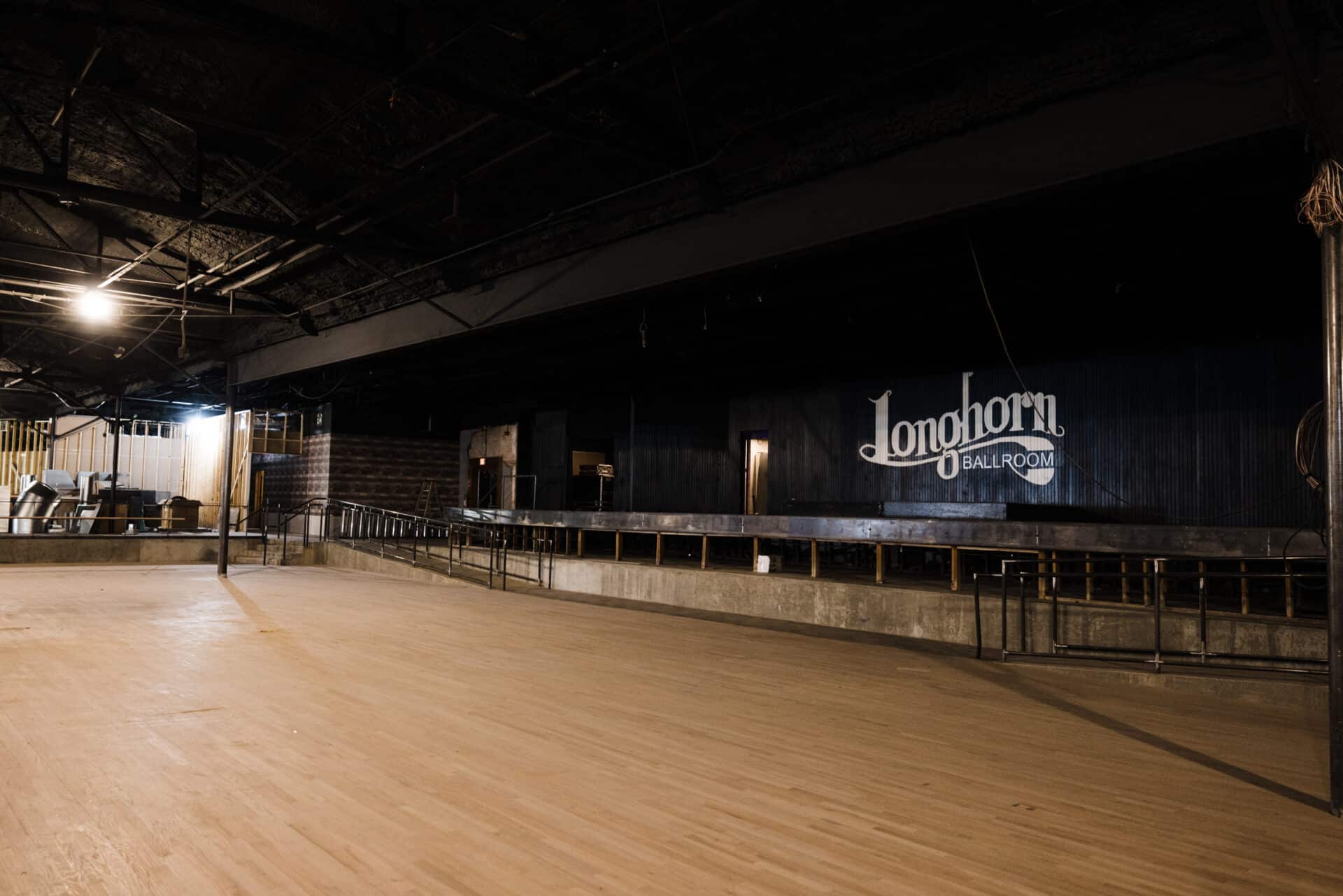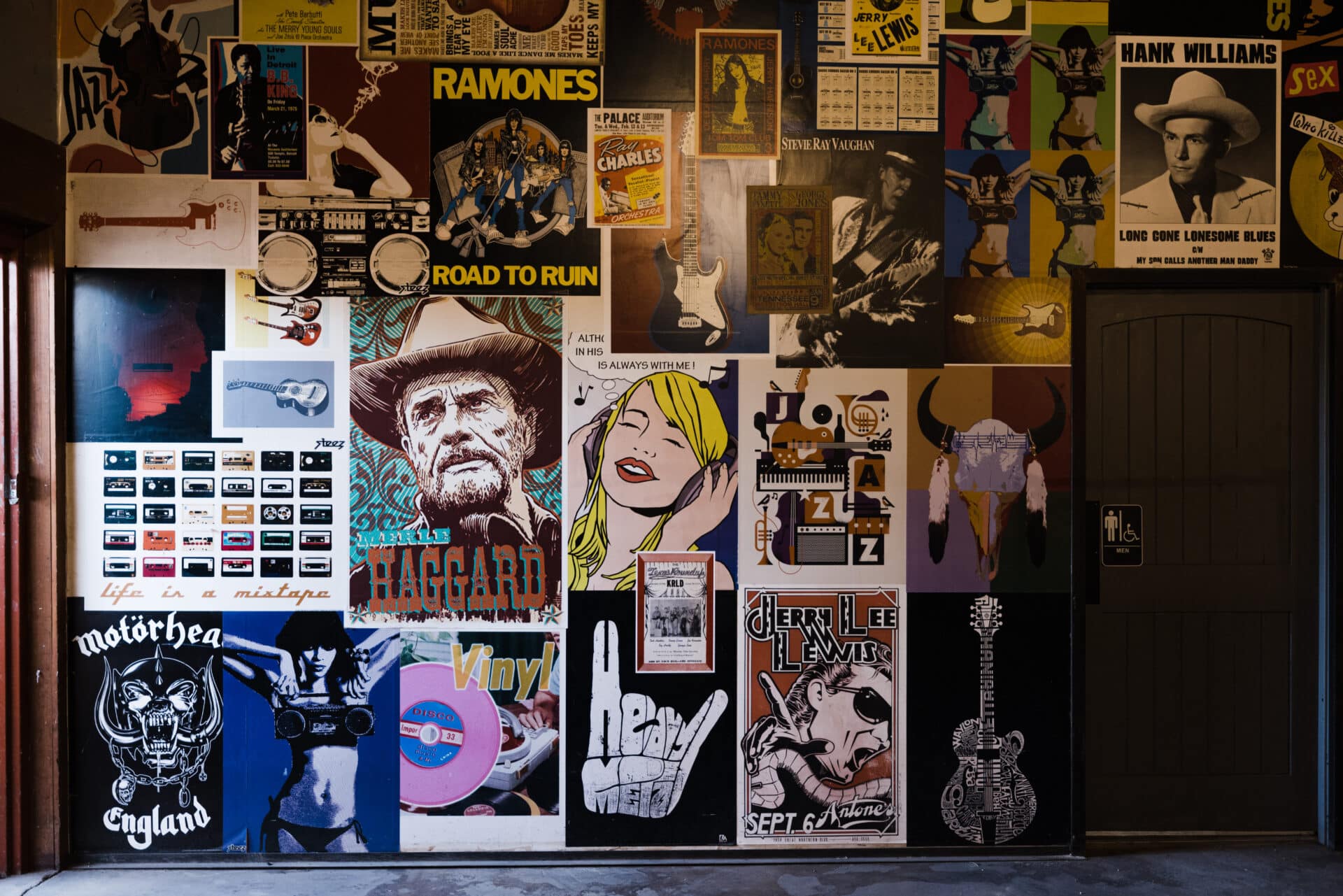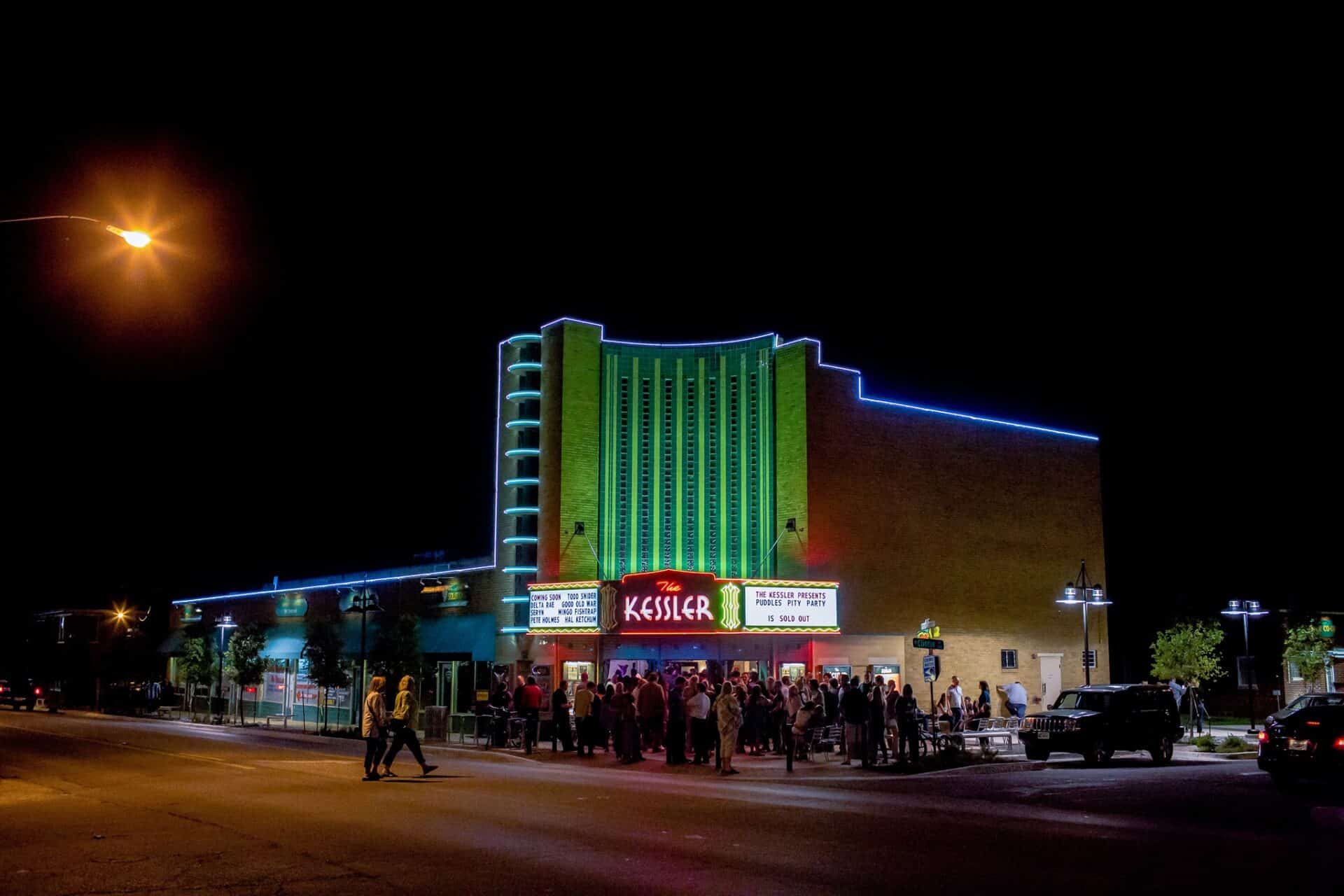Features
The Longhorn Ballroom Rides On
Jeff Liles has vivid memories of the time West African musician Fela Kuti performed at the Longhorn Ballroom. It was the 1980s and Liles attended that concert in Dallas during a period when the historic venue booked a steady stream of soul, R&B and international artists.
“To me, that was the most amazing show,” said Liles, now artistic director for Kessler Presents, a Texas concert promoter. “It showed me a whole different side of Dallas. I didn’t realize there was a huge Nigerian community here at that time. Seeing the audience, a sophisticated group wearing these amazing clothes, and being exposed to that culture, left an indelible footprint on me.”
For many older Texans, the same feeling holds true after seeing an eclectic mix of acts come through the Longhorn Ballroom over the past 70 years, whether it was James Brown, Nat King Cole, the Sex Pistols, Merle Haggard, Motorhead, Patti Smith, George Jones, the Ramones or the Red Hot Chili Peppers. It’s a footprint with a vibrant legacy, and now it’s undergoing a restoration and expansion, thanks to Kessler Presents, owned by Edwin Cabaniss, Liles’ colleague.

Cabaniss, a former senior vice president with Merrill Lynch and Salomon Smith Barney, has been an independent promoter for 13 years. He’s investing $15 million to $20 million to renovate the Longhorn, which opened in 1950 as a ranch home and concert facility for Bob Wills, the legendary Texas swing band leader.
The project cost extends to the redevelopment of a mixed-use building next to the ballroom with a revamped recording studio and the construction of a new 6,500-capacity amphitheater called The Backyard, tentatively scheduled to open in 2024.
The Longhorn Ballroom officially reopens for business on March 30 with Asleep at the Wheel, the swing band that released a tribute album to Bob Wills and His Texas Playboys in 1993. Old Crow Medicine Show, Morgan Wade and Emmylou Harris are other shows on the docket through April 22. The ballroom, a long, narrow 20,000-square-foot building, can fit 1,000 for a reserved seating show and up to 2,100 for general admission.
Bookings will be a mix of multiple styles of music in keeping with the Longhorn’s legacy. The main talent buyer is Mark Austin, out of Houston, with Liles supporting his efforts by bringing a lot of bands back that played the ballroom in the past.
“Hopefully, we can keep doing that kind of thing, push the boundaries beyond what people are used to seeing in Dallas,” Liles said.

For Cabaniss, the Longhorn project falls in line with his firm’s previous resurrections of the Kessler Theater in the Oak Cliff neighborhood of Dallas, where Stevie Ray Vaughan grew up, and the Heights Theater in Houston. Both were original movie theaters restored into thriving music venues. On its own, the 600-capacity Kessler, once owned by actor Gene Autry, known as the “The Singing Cowboy,” sat empty for 17 years before Kessler Presents reopened it in 2010. Since then, the theater has won awards for building design and best live music venue.
“Edwin’s mission is to find these old buildings that have heritage and significance and bring them back and preserve them,” said Liles, who booked the Longhorn for a few years in the ‘80s as a young talent buyer, including the infamous pairing of Motorhead with the Plasmatics. “For so many music venues, their challenge is gentrification. If you’re a developer looking at a music venue that’s open three to four nights a week, and on paper, you’re trying to decide whether to keep the building or knock it down and put something up that generates revenue 24/7 — they don’t care about the heritage. Edwin is the exact opposite. He recognizes the importance and saving a place like that is saving history.”
Cabaniss recognized the Longhorn was in danger of being torn down as part of the last big swaths of land to be redeveloped along the perimeter of downtown Dallas. If the ballroom and its six-acre site were going to be saved, now was the time to do it, he said. Kessler Presents closed on the property in April 2022, clearing a path toward reviving the ballroom whose previous owners included Jack Ruby, a key figure in the JFK assassination. Unlike the old Bronco Bowl in Dallas, a historic bowling alley converted into a concert venue that closed in 2003 and was replaced by a Home Depot, the Longhorn Ballroom should live on for many years to come, said Cabaniss, a fifth-generation Texan.
“It’s been so satisfying because it’s put a lot of our passions under one roof — historic preservation, community and culture,” he said. “That’s what we did with the Kessler. We kind of replicated that model. The Longhorn is Texas’ most historic music venue. It made all the sense to us.”
The Longhorn kept booking shows sporadically over the past 20 years under various owners. At one point, a group bought the ballroom in 2017 with ambitions of doing private events and completed some renovations. Unfortunately, that effort fell into bankruptcy two years later, just prior to the pandemic, and the Longhorn sat vacant until Cabaniss acquired the property.
“When you leave a building like that unattended for a year or more, the copper thieves come in and you can imagine where it went,” he said. “Everything had been stripped out.”
Still, the ballroom was in relatively good shape, including the western-themed murals on the exterior walls. The bulk of the restoration has focused on upgrading the HVAC, new lighting and sound systems and updating restrooms, plus ADA compliance and improved sightlines overall. A space near the front door is reserved for a living museum of sorts, showcasing memorabilia from past shows.

“What gives it the nostalgia and historic vibe is the columns and the steel and the (glass display cases) and the murals, which is great; that’s not something the copper thieves or anybody else wants,” Cabaniss said. “That’s the silver lining. We’ve got the walls, the roof and everything else coming up to modern standards, which we would have done anyway. It’s that thin edge of making sure that the authenticity at every turn is reflected in the building.”
DSGN Associates, a Dallas architect that teamed with Cabaniss to renovate the Heights Theater, is part of the Longhorn Ballroom project as well, along with Lisa Cabaniss, Edwin’s wife, with experience in interior design.
A key piece of their work is tied to applying for admission to the National Register of Historic Places, to provide historic tax credits to help defray construction costs. The group redeveloped the Kessler and the Heights “from scratch” to get them listed on the register, Cabaniss said.
It’s a lengthy process that involves working closely with local, state and federal preservation agencies on the upgrades. The Longhorn’s exterior, including the signature marquee, have been left mostly intact because it’s a big part of the iconography of the structure, said Robert Meckfessel, president of DSGN Associates. Inside the ballroom, the focus is on maintaining the honky-tonk feel to the facility and retaining that “certain rawness” that’s part of the ballroom’s appeal and history, he said.
As part of their research, DSGN studied archival photos submitted by local residents and talked to folks that attended Longhorn concerts back in the day to get a better sense of that look and feel. There were no building blueprints to fall back on; the ballroom wasn’t a high-design project compared with a vintage movie house like the Heights Theater, which reopened in 2016.
“There’s no clear path; it takes some thinking and discussions with the historical groups on how to get that done,” Meckfessel said. “It has already been changed several times over the years. It’s about what is appropriate to that character and the spirit of it.”

There is some new construction going on inside the ballroom to build nine suites at the front of the house by the mixing board. They’re slightly elevated boxes with couch seating and great sightlines looking over the general admission floor, Cabaniss said. Suites hold 10 to 12 people and come with wait service and each one has its own theme, similar to the Kessler and the Heights. At the Longhorn, five suites are available to the public as a group buy with the balance reserved for sponsors.
As opening night approaches, the goal for Kessler Presents isn’t to make a big splash on day one, but to be long-term stewards of the ballroom. “It’s been off the radar for nearly 20 years and we want to roll it out one show at a time,” Cabaniss said.